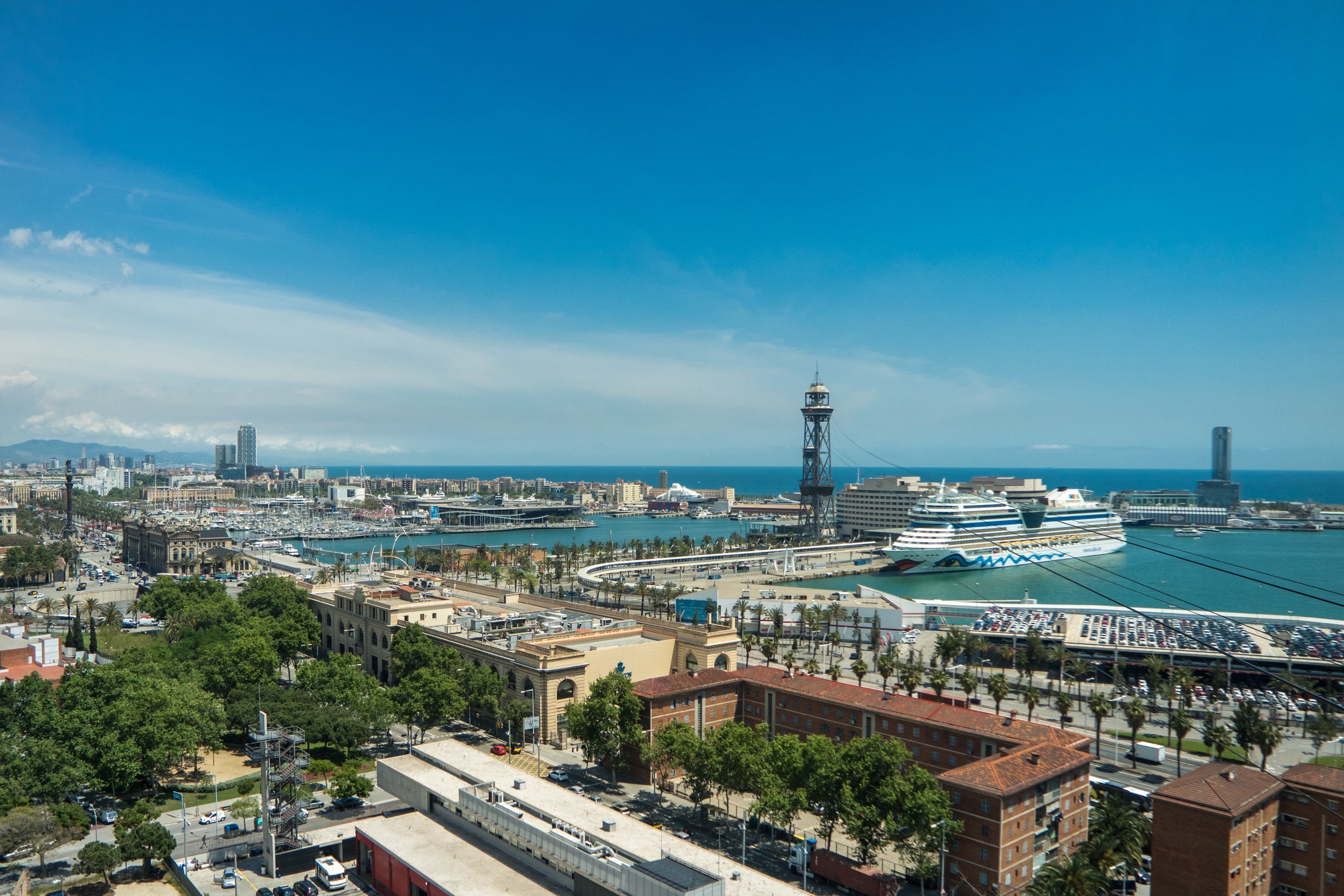Cruise ships in Europe pumped out more harmful gases than 1 billion cars last year, report shows
Warning that cities are ‘choking on toxic air pollution’ despite industry moves towards lower-emission cruising

Cruise ships were responsible for more than four times the sulphuric emissions into Europe’s atmosphere than all of the continent’s car last year, according to a new report.
This comes despite repeated pledges by the industry to move towards a greener model of operating.
Research from Transport & Environment, who describe themselves as a “clean transport campaign group”, shows 509 tonnes of sulphur oxides were emitted by the 218 cruise vessels sailing in Europe last year. This is up from pre-pandemic levels of 465 tonnes.
Although a cap on sulphur in marine fuels, introduced by the UN in 2020, has cut emissions per tonnes of fuel consumed, the addition of new ships to existing fleets means that overall emissions have increased – although passenger levels are not yet at pre-pandemic in Europe.
Barcelona was Europe’s most polluted port last year followed by Civitavecchia, a coastal port northwest of Rome and the Athenian port of Piraeus.
In better news, Venice – the most cruise-polluted port in 2019 – dropped to 41st in the list last year following a ban on large cruise ships entering the port that was introduced in 2021, leading to an 80 per cent fall in sulphur oxide emissions.
In the UK, Southampton ranked as Europe’s seventh most-polluted port in terms of cruise ship air pollution, with just 45 ships responsible for almost 10 times more harmful pollutants than all of the city’s 93,000 cars.
Constance Dijkstra, shipping campaigner at Transport & Environment, said: “The pandemic provided some respite for port cities, but this is now well and truly over. Cruising is back and tourist hotspots like Barcelona and Athens are again choking on toxic air pollution from cruise ships.
“Venice has shown that tackling cruise ship pollution is possible, but bans aren’t the only way. Ports can significantly reduce pollution levels by forcing ships to plug into electricity at the port instead of running their engines, and by supporting the adoption of zero-emission fuels.”
Jon Hood, Transport & Environment’s UK sustainable shipping manager, said: “With the government currently revising its flagship green shipping plan we have the perfect opportunity to finally get serious about addressing shipping pollution.
“That means switching away from filthy fossil fuels and onto clean, zero emission fuels like green hydrogen, and setting binding targets for UK ports to support zero-emission technologies.”
The predominant sulphur oxide found in the lower atmosphere is sulphur dioxide, which is a corrosive, acidic gas. According to the UK government, direct exposure to SO2 is associated with asthma and chronic bronchitis and can lead to irritation and constriction of the airways, and can also form acid rain.
Along with Venice, which has long been at the centre of the anti-cruise movement, other European port cities have also placed restrictions on larger vessels, including Santorini, Palma de Mallorca and Dubrovnik. The mayor of Barcelona has previously called on the regional government to curb the number of ships allowed in the city’s port.
Andy Harmer, managing director Cruise Lines International Association (CLIA) UK & Ireland, told The Independent that the cruise industry is “strongly committed to continually improving its sustainability efforts, and cruise lines are making significant investments to develop new environmental technologies, sustainable marine fuels and to equip cruise ships to connect to shoreside electricity, removing emissions while at berth.”
“The global cruise fleet, which totals around 300 ships, is one of the most technologically advanced and energy efficient in history. The ships launching this year are indicative of the advancements cruise is making in moving away from a single-fuel industry towards multiple-fuel capabilities. As part of this transformation, cruise lines are pursuing a variety of new and more sustainable alternative energy sources, including preparing their ships for electric batteries, advanced biofuels, hydrogen fuel cells, and synthetic fuels.
“Today, already more than 80 ships in the CLIA-member cruise line fleet, representing 40 per cent of global capacity, are equipped with onshore power connections and another 83 ships are planned for retrofits. It is anticipated that around 85 per cent of cruise ships coming online between now and 2028 will be equipped with the ability to connect to shoreside electricity.”
Subscribe to Independent Premium to bookmark this article
Want to bookmark your favourite articles and stories to read or reference later? Start your Independent Premium subscription today.

Join our commenting forum
Join thought-provoking conversations, follow other Independent readers and see their replies